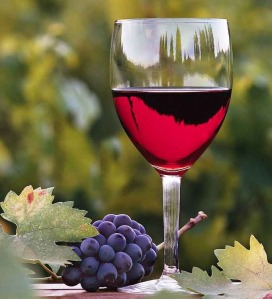Before Robert Parker Jr. introduced the 100-point wine-rating system to the world back in 1978, wine tasters, if they used any scoring method at all, would generally use a simple “five star” scale to rate their wines.
This five star (or five point) system is best understood as:
1 Poor
2 Fair
3 Good
4 Excellent
5 Outstanding
Naturally, it is simplicity that differentiates a five-star system from Parker’s system. After all, what budding connoisseur intrigued by wine would not choose to begin their lifetime of passion de vin with something elemental, readily grasped? And who among us can really tell the difference between an 83-point wine and an 84-point wine?
While there is much that is ludicrous about the Parker scale (e.g., a 76-point wine can be just as undrinkable as a 38-point wine), it’s much easier to understand the five-point system because we can readily identify with it – it corresponds with the letter-grade system many of us grew up with in grammar school. A simple system, yes. But very, very dull! Fortunately, other ardent wine rating personae have tackled the notion of dressing up this simple little system with rating thresholds of their own.
Jon Bonné, lifestyle editor for MSNBC.com (and Amuse-Bouche wine blogger) expands the aforementioned scale to the following:
1.0, Undrinkable: Major flaws that make the wine too bad to drink.
2.0, Marginally drinkable: You’d drink it if stranded on a desert island, but not otherwise.
3.0, Acceptable: Wine free of any major flaws, but not otherwise worth mentioning.
3.5, Good: Decent and drinkable wine, competently made and enjoyable to the average drinker.
4.0, Very good: Highly pleasurable wine with excellent qualities, the product of top-notch winemaking.
4.5: Excellent: Wine that excels in every aspect, true to its terroir and origin and of exceptional quality.
5.0, Extraordinary: Classic wine of rare and unparalleled quality.
Bonné suggests that:
“Wines below 3.0 aren’t worthy of consideration at all, and 3.5 is a decent starting point for wine worth buying. Beyond that? It’s really a matter of personal taste and preference.”
Deceptively simple. Yet notice how the five-point scale is already stretching out to something beyond five points. In his defense, Bonné only bases his ratings on a five-point system. But whoa – he’s willing to rate incrementally by half-points. Perceptively tedious!
Erin over at Grape Juice quips that she has her parents to thank for her growing alcoholism. Her wine rating methodology goes beyond the five-star rating system, too, though I’d have to say it’s more of a five-bar raving system. Or raging system – take your pick:
Not Even On Pain of Death: I’d pretty much run screaming from this wine if I ever saw it again.
I Wouldn’t Make Faces: Not my choice, but if someone were to serve it to me at a gathering of some sort, I wouldn’t turn up my nose.
I’d Hit It: A good wine, but not necessarily mindblowing. I’d consider buying it again.
Repeat Offender: I’ll be buying this one again. A wine with a certain “je ne sais quoi”.
Bet Your Bottom Dollar: A sure-fire hit. Even your mother-in-law would like this one.
Hmmm, I wonder how Erin can taste wine with her tongue in her cheek like that. Come to think of it, if I had a mother-in-law, she’d probably only drink white zinfandel. At the other end of the wine-scoring spectrum, Rod Phillips at Worlds of Wine suggests a 1,000-point wine-scoring scale.
Methinks Rod jesteth overtly. But yikes!! Talk about tedious. Well then, could there be a wine tasting methodology that isn’t boorishly elemental, deceptively simple, flagrantly tedious, or mincingly ambiguous? Something that goes beyond “trite” yet doesn’t have you mired in point-shaving schemes?
You bet. It’s a moderately sane 20-point system, and it’s freely available to all. If you like wine but want to know why you like it, or if you would choose to educate yourself further about wine, then here’s a little guidance, some developmental history, and a place to download the winehiker’s scoring sheet for nearly everyone.




